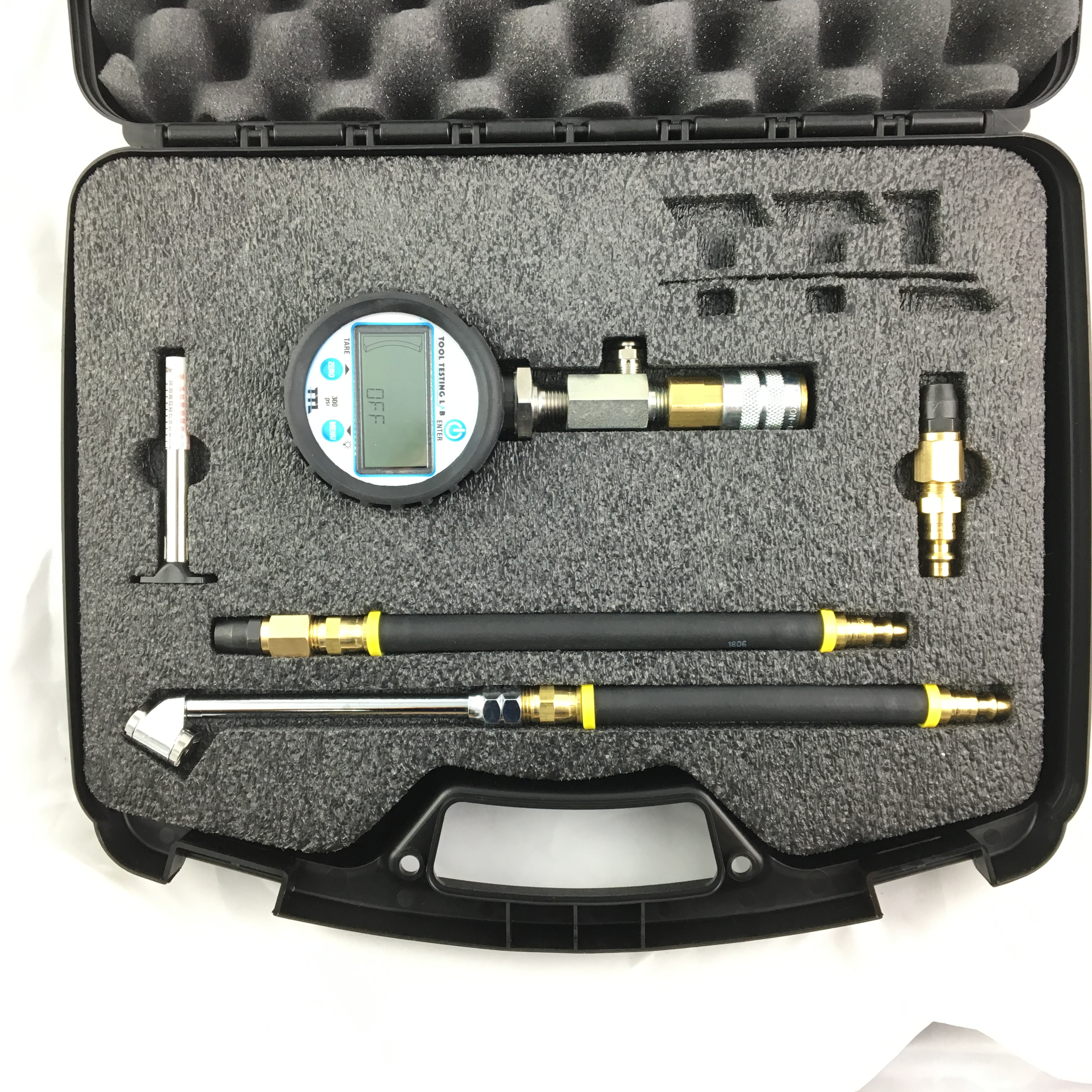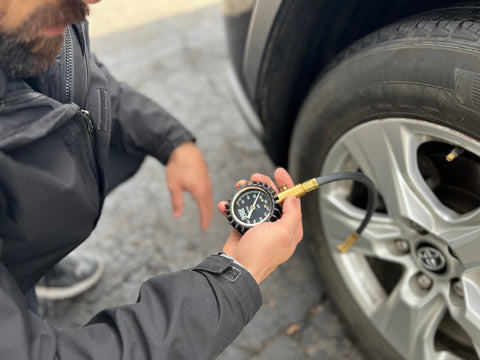The recommended psi for tires depends on the vehicle and can typically range from 30 to 35 psi. A properly inflated tire is crucial for safe and efficient driving.
The correct tire pressure ensures proper handling, improves fuel efficiency, and maximizes tire lifespan. It is important to check your vehicle manufacturer’s specifications to determine the ideal psi for your tires. Underinflated tires can result in decreased fuel efficiency and poor traction, while overinflated tires can cause a harsh ride and increased risk of a blowout.
Regularly monitoring and adjusting tire pressure is a simple maintenance practice that can greatly enhance your driving experience.

Credit: www.ttlcal.com
Importance Of Correct Tire Pressure
Ensuring that your tires have the correct pressure is crucial for several reasons. Not only does it enhance your safety on the road, but it also increases fuel efficiency and enhances tire longevity. In this blog post, we will explore the significance of maintaining the appropriate tire pressure and its impact on your overall driving experience.
Safety On The Road
One of the most critical reasons to maintain the correct tire pressure is to ensure your safety on the road. When your tires are underinflated, it can lead to poor handling, less control over your vehicle, and increased stopping distances. Conversely, overinflated tires can compromise your grip on the road, resulting in reduced traction. Both scenarios increase the risk of accidents, especially in hazardous driving conditions.
Fuel Efficiency And Tire Longevity
Proper tire pressure plays a significant role in fuel efficiency and tire longevity. When your tires are inflated to the recommended psi (pounds per square inch), it minimizes rolling resistance. This means your vehicle requires less energy to move, resulting in improved fuel efficiency. Additionally, correctly inflated tires distribute the weight of your vehicle evenly, reducing excessive wear and tear. This helps extend the lifespan of your tires, saving you money in the long run.
Tire pressure also affects your vehicle’s handling and performance. Underinflated tires increase the rolling resistance, causing the engine to work harder and consume more fuel. Similarly, overinflated tires can cause the ride to feel uncomfortable and stiff, impacting your overall driving experience.
Moreover, tire pressure impacts the alignment and suspension of your vehicle. When the pressure is incorrect, it can cause uneven tread wear, leading to the need for premature tire replacements. This not only puts a dent in your wallet but can also be a hassle to deal with. Therefore, ensuring you have the correct tire pressure is essential for optimal vehicle performance, handling, and a smoother ride.
In conclusion, maintaining the right tire pressure, as recommended by the manufacturer, is crucial for your safety, fuel efficiency, and tire longevity. Take the time to check your tire pressure regularly, ideally monthly or before embarking on a long journey. It’s a small task that can make a big difference in your overall driving experience and peace of mind on the road.

Credit: jacosuperiorproducts.com
Factors Affecting Tire Pressure
Maintaining the correct tire pressure is crucial for optimal performance and safety. Factors such as temperature changes, driving habits, and vehicle load can impact tire pressure. Checking and adjusting tire pressure to the recommended PSI helps ensure proper handling, fuel efficiency, and tire longevity.
Temperature Changes
Temperature changes play a crucial role in affecting tire pressure. When the temperature decreases, the air inside the tire contracts, leading to a decrease in tire pressure. Conversely, when the temperature rises, the air expands, causing an increase in tire pressure.
During colder months, it is essential to frequently check and adjust the tire pressure to account for the decrease in temperature.
Similarly, in warmer weather, regular pressure checks are necessary to prevent over-inflation due to the expansion of air.
Remember, even a minimal change in temperature can impact tire pressure, so it’s crucial to monitor it regularly.
Driving Habits
Your driving habits also have an effect on tire pressure. Aggressive driving, such as rapid acceleration and hard braking, increases the heat generated in the tires. This heat causes the air inside to expand, resulting in higher tire pressure. On the other hand, gentle driving exerts less heat, which maintains the tire pressure within the recommended range.
By practicing smooth driving techniques, you can help maintain consistent tire pressure and reduce the risk of over-inflation.
Additionally, avoid overloading your vehicle, as excessive weight can place extra stress on the tires and lead to increased tire pressure.
Being mindful of your driving habits helps promote safer driving conditions and promotes optimal tire performance.
Determining The Right Psi
When it comes to ensuring optimal tire performance and safety, knowing the right psi (pounds per square inch) for your vehicle’s tires is crucial. Determining the right psi involves considering various factors such as the vehicle manufacturer’s recommendations and load and towing considerations.
Vehicle Manufacturer’s Recommendations
Vehicle manufacturers provide specific psi recommendations for each vehicle model, which can usually be found in the owner’s manual or on a sticker inside the driver’s side door jamb. Following these recommendations is essential for maintaining proper tire wear, fuel efficiency, and overall vehicle performance.
Load And Towing Considerations
Considering the load and towing conditions is vital in determining the right psi for your tires. Different loads and varying towing weights can affect tire pressure requirements. Varying the psi based on these factors helps to ensure safety, stability, and durability of the tires when carrying heavier loads or towing trailers.
Measuring And Adjusting Tire Pressure
Ensuring the correct psi for tires is crucial for safety and performance. It’s essential to know how to measure and adjust tire pressure effectively.
Using A Tire Pressure Gauge
When measuring tire pressure, always use a tire pressure gauge for accuracy. Press the gauge evenly onto the valve stem to get a proper reading.
Inflation And Deflation Techniques
- When inflating tires, refer to the vehicle’s manual for the recommended psi.
- Never overinflate tires, as it can lead to uneven tread wear.
- For deflation, use the tire gauge to slowly release air until reaching the desired psi.
Psi Maintenance And Monitoring
Proper tire pressure is crucial for efficient vehicle performance and safety on the road. Maintaining and monitoring the psi of your tires regularly is essential for optimal driving conditions.
Regular Checking
Performing routine tire pressure checks helps prevent issues like premature wear and poor fuel efficiency. Monitor psi monthly and before long trips.
Seasonal Adjustments
Weather changes affect tire pressure, necessitating seasonal adjustments. Check psi more frequently during temperature shifts.

Credit: www.youtube.com
Frequently Asked Questions For What Psi For Tires
Is 40 Psi Too High For Tires?
No, 40 PSI is not too high for tires. It is within the recommended range for most vehicles. However, it’s important to check the manufacturer’s guidelines for your specific vehicle to ensure the correct tire pressure. Regularly monitoring and maintaining proper tire pressure is crucial for optimal performance and safety.
How Do I Know What Psi My Tires Need?
To determine the correct PSI for your tires, refer to the vehicle owner’s manual or a sticker on the driver’s doorjamb. This information is crucial for maintaining proper tire inflation, ensuring safety and optimal performance of your vehicle. Regularly check and adjust tire pressure accordingly.
Is 35 Psi Ok For Tires?
Yes, 35 PSI is generally safe for most car tires, but always reference your vehicle’s owner’s manual for the recommended tire pressure.
What Psi Should My Tire Rating Be?
The PSI rating for your tire should be as specified by the manufacturer. Check your vehicle’s manual or the sticker inside the driver’s door for the recommended PSI. Proper tire pressure ensures safety and optimal performance.
Conclusion
Maintaining the right psi for your tires is crucial for safety and performance. By regularly checking and adjusting tire pressure, you can improve fuel efficiency and ensure even tread wear. With the proper psi, you’ll enjoy a smoother ride and reduce the risk of blowouts.
Take care of your tires and they’ll take care of you.
